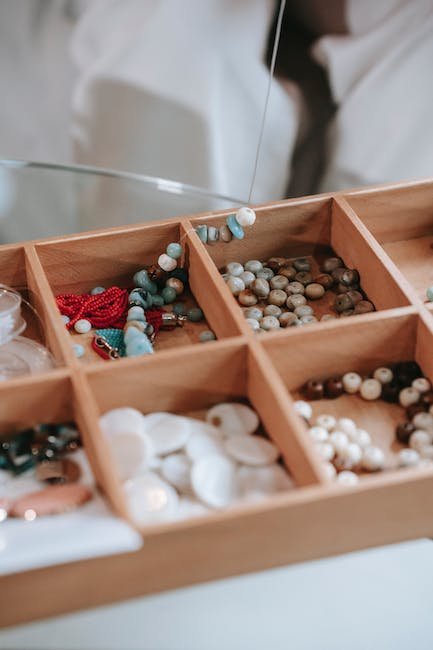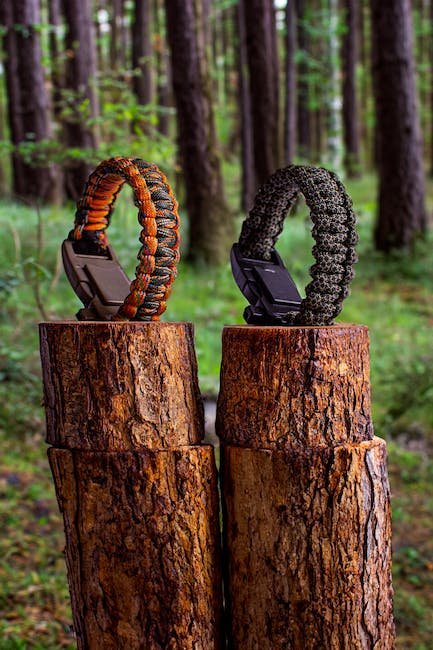Now Reading: DIY Traps and Snares for Small Game Hunting
-
01
DIY Traps and Snares for Small Game Hunting

DIY Traps and Snares for Small Game Hunting
Venturing into the wilderness, armed with nothing but your wits and a primal instinct for survival, is a humble reminder of our ancestors’ resilience. While today’s world may provide us with an abundance of conveniences, the allure of self-sufficiency still beckons some intrepid souls. There is an age-old thrill in traversing nature’s domain, seeking sustenance and liberation from the confines of the modern world. And for those seeking to embark on a journey of self-reliance, mastering the art of small game hunting is an essential skill to possess. In this article, we delve into the realm of do-it-yourself traps and snares, unlocking a treasure trove of knowledge that will transform you into a cunning predator. So grab your tools, tap into your inner survivalist, and let’s explore the craft of trapping for the hunters and gatherers in us all.
Table of Contents
- Crafting Effective Traps and Snares for Small Game Hunting
- Building a Reliable Snare: DIY Techniques and Materials
- Mastering the Art of Setting Traps: Techniques and Tips
- Choosing the Right Bait for Small Game Trapping
- Enhancing Trap Success: Camouflage and Concealment Techniques
- Q&A
- Concluding Remarks

Crafting Effective Traps and Snares for Small Game Hunting
Trapping small game can be a rewarding and efficient way to supplement your hunting skills. With the right tools and techniques, you can successfully catch rabbits, squirrels, and other small animals without relying solely on your hunting rifle. Here are some tips for crafting effective traps and snares:
1. Choose the right materials: When it comes to constructing traps and snares, durability is key. Ensure that you use strong materials such as sturdy wire or cordage that can withstand the weight and strength of the small game you intend to catch.
2. Consider camouflage: Just like in traditional hunting, blending in with your surroundings is crucial when setting up traps and snares. Use natural materials, such as branches, leaves, and dirt, to conceal your traps and minimize the chances of scaring away your prey.
3. Optimize your location: Placement is everything when it comes to trapping small game. Take the time to study the animal’s behavior to identify their pathways, feeding areas, and burrows. Set your traps and snares in strategic locations that maximize the chances of capturing your target.
4. Vary your traps: There are numerous types of traps and snares that can be effective for small game hunting. From simple deadfall traps to more complex snare setups, it’s important to experiment and find what works best for your environment and target species.
Remember to always check your traps regularly and ethically dispatch any animals caught. Trapping is a valuable skill that requires patience, attention to detail, and respect for wildlife. By mastering the art of crafting effective traps and snares, you can enhance your overall hunting experience and secure a reliable source of food in the wild.
Building a Reliable Snare: DIY Techniques and Materials
When it comes to building a snare, reliability is key. Whether you’re a seasoned outdoors enthusiast or a survival enthusiast, having a functional and sturdy snare can make a significant difference in your success. In this section, we’ll explore some innovative techniques and materials that can help you construct a dependable snare for trapping game or use in emergency situations.
Choosing the Right Material:
- Start by selecting a strong, flexible cord or wire that can withstand tension and wear.
- Consider using materials such as paracord, braided fishing line, or even stainless steel wire for added durability.
- Avoid using materials that easily break or stretch, as they may compromise the reliability of your snare.
Utilizing Effective Techniques:
- Focus on creating a loop that can securely tighten around the animal’s leg or body.
- Learn various snare configurations, such as the basic noose or the figure-four trap, to cater to different situations and animal sizes.
- Ensure enough tension is applied to the snare, but avoid excessive force that could harm or injure the caught animal.
Remember, building a reliable snare requires both the right selection of materials and the skillful execution of techniques. By combining strength, flexibility, and clever methods, you’ll craft a snare that will boost your chances of a successful capture in challenging environments.
Mastering the Art of Setting Traps: Techniques and Tips
Setting traps is not only a vital skill for survivalists, but it can also be an intriguing art form. By mastering the art of setting traps, you can enhance your hunting abilities and increase your chances of successfully capturing prey. Here are some techniques and tips to help you hone your trap-setting skills:
- Choose the perfect location: Identifying the right location for your trap is crucial. Look for signs of animal activity such as tracks, droppings, or nests. Consider the terrain, natural funnels, and travel patterns of your target species.
- Understand the behavior of your target: Every animal has distinct behaviors and habits. Research and learn about your target species to anticipate their movements and increase trap effectiveness.
- Use decoys and attractants: Some animals can be enticed by decoys or attractants. Utilize scents, sounds, or visual stimuli to lure your prey towards the trap, making it more likely for them to fall into your carefully laid plan.
- Ensure trap concealment: Blending your trap seamlessly into the environment is essential for success. Use natural materials, camouflage, or modifications to make your trap inconspicuous, avoiding detection by wary prey.
- Regular maintenance and diligence: Check your traps regularly to ensure they are functioning properly and remain undamaged. You must also adapt your traps to changing weather conditions and seasonality to adjust to the behavior of your target species.
Remember, practice makes perfect! Experiment with different trap designs and techniques to find what works best for you. With time, patience, and attentiveness, you can become a master of the art of setting traps, greatly increasing your chances of a successful catch.
Choosing the Right Bait for Small Game Trapping
When it comes to trapping small game, using the right bait can make all the difference in your success. Small game such as rabbits, squirrels, and raccoons have specific preferences when it comes to their food choices, so it’s important to choose bait that will attract them effectively. Here are some tips to help you select the perfect bait for your small game traps:
- Research the species: Each small game species has different feeding habits and preferences. Take some time to research what type of food they are most likely to be enticed by. For example, rabbits are fond of fresh vegetables and fruits, while squirrels are attracted to nuts and seeds.
- Use natural scents: Small game rely heavily on their sense of smell when searching for food. Enhance the attractiveness of your bait by incorporating natural scents that mimic their natural food sources. For instance, you can use apple slices for rabbits or a mixture of peanut butter and sunflower seeds for squirrels.
- Consider the season: Be mindful of the season when selecting bait for your small game traps. In the winter months, when food is scarce, consider using high-calorie options like corn or nuts. In warmer months, fresh greens or berries might be more enticing.
Remember, patience is key when trapping small game. It may take some trial and error to find the perfect bait that appeals to your target species. By following these tips and adapting to the preferences of the small game in your area, you’ll increase your chances of trapping success.
Enhancing Trap Success: Camouflage and Concealment Techniques
When it comes to executing successful traps, one of the key factors to consider is camouflage and concealment. The ability to blend seamlessly with the environment and remain undetectable is paramount in fooling your prey and increasing your chances of a successful capture. Here are some innovative techniques to enhance your camouflage game:
- Choose the right colors: Understanding the colors prevalent in your trapping environment is crucial. Use earthy tones like browns, greens, and grays to match the surroundings. This will help you to remain inconspicuous and invisible to your target.
- Utilize natural materials: Incorporating natural materials from the environment around you can significantly enhance your camouflage. Disguising your traps with leaves, branches, or even mud can help them blend seamlessly into the surroundings, making them nearly impossible for your prey to detect.
- Employ strategic placement: Properly positioning your traps is vital for maximizing their effectiveness. Study your target’s movements and behavior patterns to identify ideal locations. Place your traps in areas that provide cover or near natural features, such as fallen logs or dense foliage, to increase the chances of trapping your prey.
- Opt for scent elimination: Remember, camouflage isn’t just about visual deception. Animals have a keen sense of smell, so eliminating your scent is equally important. Use scent-neutralizing sprays or take precautions to avoid leaving any residual odor near your traps.
By mastering these camouflage and concealment techniques, you’ll not only enhance your trap success but also develop a deeper connection with nature through a greater understanding and appreciation of your environment.
Q&A
Q: What are some important considerations before setting up DIY traps and snares for small game hunting?
A: It’s crucial to check local regulations to ensure legality and animal welfare. Additionally, always prioritize safety by carefully selecting trap locations and regularly checking them to avoid accidental entrapment or harm.
Q: What are the advantages of making DIY traps and snares for small game hunting?
A: DIY traps and snares allow hunters to utilize readily available resources, cost-effective materials, and customizable designs to increase their chances of catching small game without breaking the bank.
Q: Are there any recommended materials for constructing DIY traps and snares?
A: Popular materials include lightweight wire, fishing line, cords, and natural fibers such as vines. It’s important to choose materials that are strong enough to hold the game but gentle enough to prevent unnecessary harm.
Q: What are some effective DIY traps and snares for small game hunting?
A: Simple snare traps, deadfall traps, and figure-four traps are popular and highly effective choices. They mostly require minimal materials and basic construction techniques.
Q: How can one ensure the humane treatment of animals when using DIY traps and snares?
A: To promote humane treatment, invest time in proper trap placement. Regularly check traps to minimize unnecessary suffering, and always take steps to dispatch the game quickly and ethically.
Q: Can DIY traps and snares be an efficient method for small game hunting?
A: Absolutely! DIY traps and snares, when constructed and employed correctly, can be highly efficient in catching small game. Understanding animal behavior and selecting strategic trap locations further enhance their effectiveness.
Q: What are some potential drawbacks or challenges of using DIY traps and snares?
A: DIY traps and snares require patience and skill to construct and set up properly. Additionally, unpredictable weather, variations in animal behavior, or encounters with non-target species can occasionally pose challenges for hunters.
Q: Are there any safety precautions to consider when using DIY traps and snares?
A: Prioritize safety by wearing protective gloves and handling materials carefully to avoid injuries. It’s essential to be aware of surroundings, ensuring that traps don’t pose risks to humans, livestock, or pets inadvertently.
Q: Are there any alternatives to DIY traps and snares for small game hunting?
A: Yes, alternatives include modern hunting equipment like firearms, crossbows, or commercially available traps. However, DIY traps and snares can provide an affordable and sustainable option for those who prefer a more primitive approach.
Concluding Remarks
In a world where pre-packaged convenience often reigns supreme, discovering the lost art of DIY traps and snares for small game hunting is like a whisper from the past. With the knowledge and creativity to fashion these ingenious contraptions, you step into the shoes of the resourceful hunters of yesteryears. Whether you are seeking to reconnect with nature or simply looking for a unique challenge, the DIY approach offers a glimpse into a forgotten world of self-sufficiency.
But remember, dear reader, as you embark on your own small game hunting adventure, it is crucial to tread softly on the delicate balance between preservation and sustenance. Respect the inherent connection we share with nature and the animals we seek to capture. Understanding the ethical implications is as crucial as honing your trapping skills.
So, go forth with caution and curiosity, embracing the spirit of innovation that pulses through your veins. A mere gathering of twigs, a clever contraption fashioned from simple materials, or an intricately woven net can be the keys to unlocking a successful hunt. Be prepared to witness the beauty of patience and the satisfaction of survival skills in action.
As the sun sets on this exploration of DIY traps and snares for small game hunting, we hope you find inspiration in the simplicity of these age-old techniques. Whether you decide to learn from our guides or branch out with your own unique design, never forget the delicate harmony that lies beneath the surface of nature’s bounty.
In this journey, may you rediscover not only the thrill of the hunt but also the bond that has connected mankind with the wild for centuries. As your footsteps blend with the echoes of hunters long gone, may your respect for nature’s delicate balance guide you, and may you forever be captivated by the wonders of the untamed world around us.
As an affiliate, my content may feature links to products I personally use and recommend. By taking action, like subscribing or making a purchase, you’ll be supporting my work and fueling my taco cravings at the same time. Win-win, right?
Want to read more? Check out our Affiliate Disclosure page.





